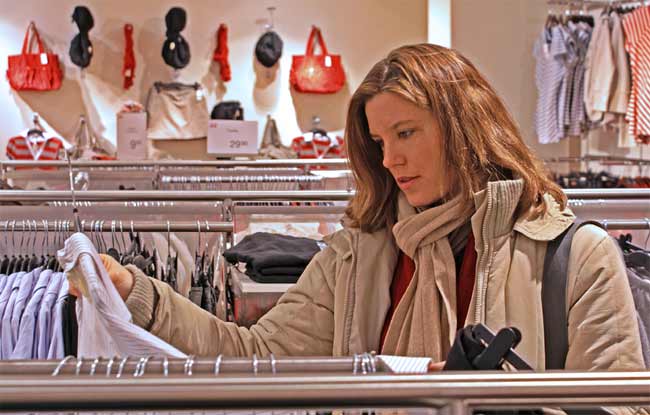Brand Names: From Mesopotamia to MAC

I was recently sequestered for three days at the Mall of America outside Minneapolis, Minnesota. I was there to cover an event, and I figured, "Cool, three days to shop." After all, The Mall of America is the size of nine football fields, a consumer's paradise, and I expected to spend my time weaving in and out of those shops picking up goodies.
But instead, I spent all my free time at one place — MAC Cosmetics.
I lurked at the counter trying out samples and let the clerks apply layer upon layer of colors on my face giving me several new looks over the course of three days.
I spent a whole lot of money on makeup, and nothing else.
Why, in the midst of shopping paradise, did I only go to one shop and stay there?
According to Archaeologist David Wengrow of University College, London, my MAC-attack was yet another example of the natural human attachment to brands.
Brand names, we assume, are a consequence of the Industrial Revolution. As goods started to roll off the factory line in large numbers, manufactures had to find a way to reassure customers that their cookie-cutter products were just as good, if not better, than hand-crafted items.
Get the world’s most fascinating discoveries delivered straight to your inbox.
And so we got the "science" of marketing. Stamp those goods with a simple symbol — the British Bass Ale red triangle was the first registered trademark in 1777 — and then flash that symbol all over town until it's imprinted on everyone's brain. The idea is that familiarity breeds trust, and that people quickly associate a familiar trademark with value.
But Wengrow makes the case that branding as a commodity tool has been around long before the Industrial Revolution. He claims people have been putting labels on goods ever since they congregated in large groups and stopped making all their own stuff.
His perspective comes from looking at ancient decorated seals used to close jars. Archaeologists used to believe these seals were bits of artistic fluff, but Wengrow says they actually describe contents, grade or household origin. They are labels.
Once people stopped growing or bottling their own, Wengow claims, they needed a way to mark goods for content and quality, and to build consumer trust, and so those seals were important for trade and consumption even though nothing was made in a factory.
Containers from the Middle East as far back as 7,000 B.C. bore these seals, and those containers were traded far and wide. Archaeologists have also uncovered charms from ancient Mesopotamia that were hung from jars as marks of quality.
Branding as a way of marking value and reassuring customers is apparently much older than the Nike "Swoosh" or the Starbucks mermaid or "twin-tailed siren." Instead, human groups have relied on brand names ever since they settled down and passed goods from one culture or society to another. Labels have allowed human groups to move about, expand into new territories, trade and rely on each other as manufacturers.
And so I wear my MAC lipstick proudly, knowing I am following in the footsteps of ancient Mesopotamians.
Meredith F. Small is an anthropologist at Cornell University. She is also the author of "Our Babies, Ourselves; How Biology and Culture Shape the Way We Parent" (link) and "The Culture of Our Discontent; Beyond the Medical Model of Mental Illness" (link).


